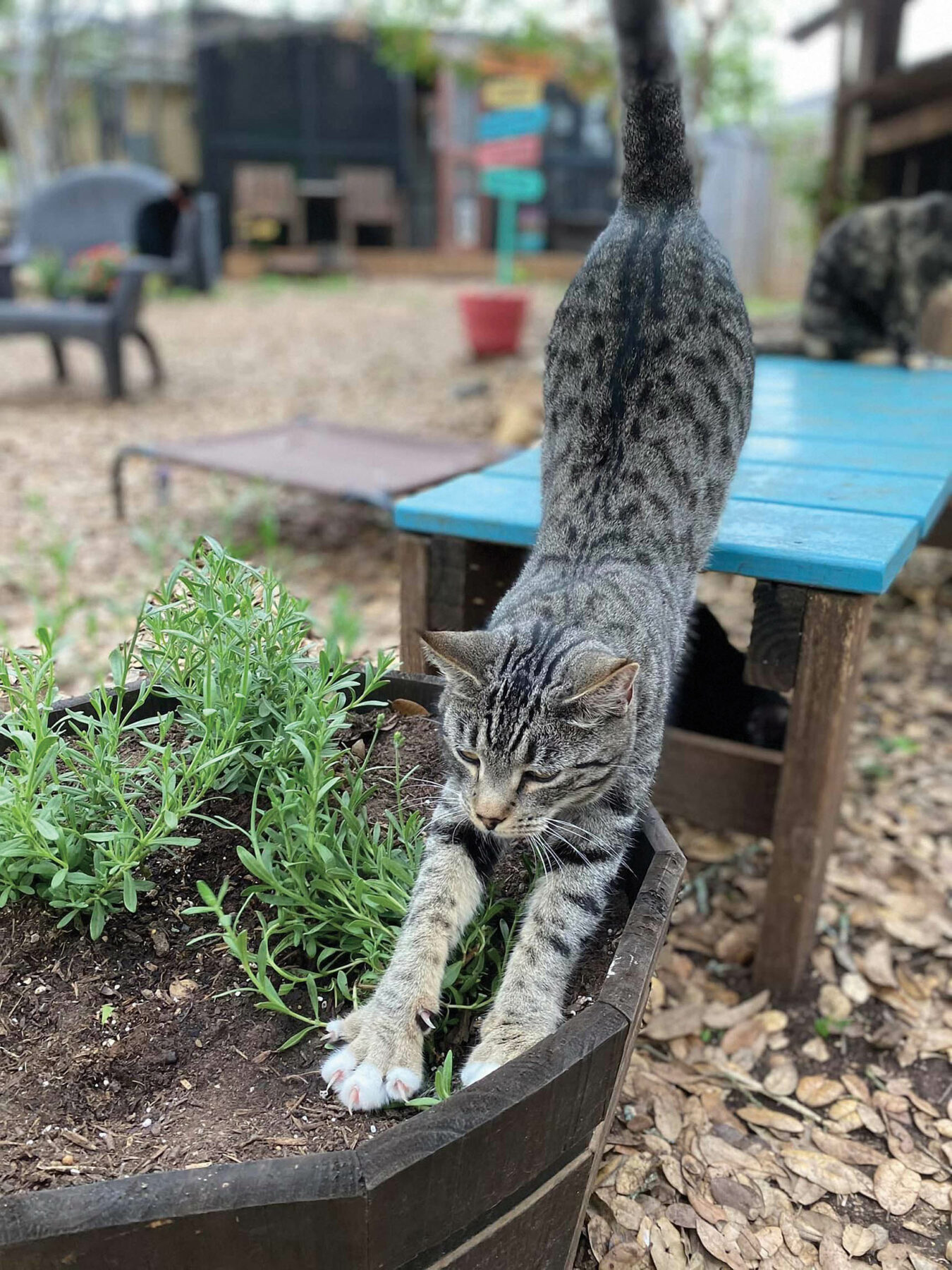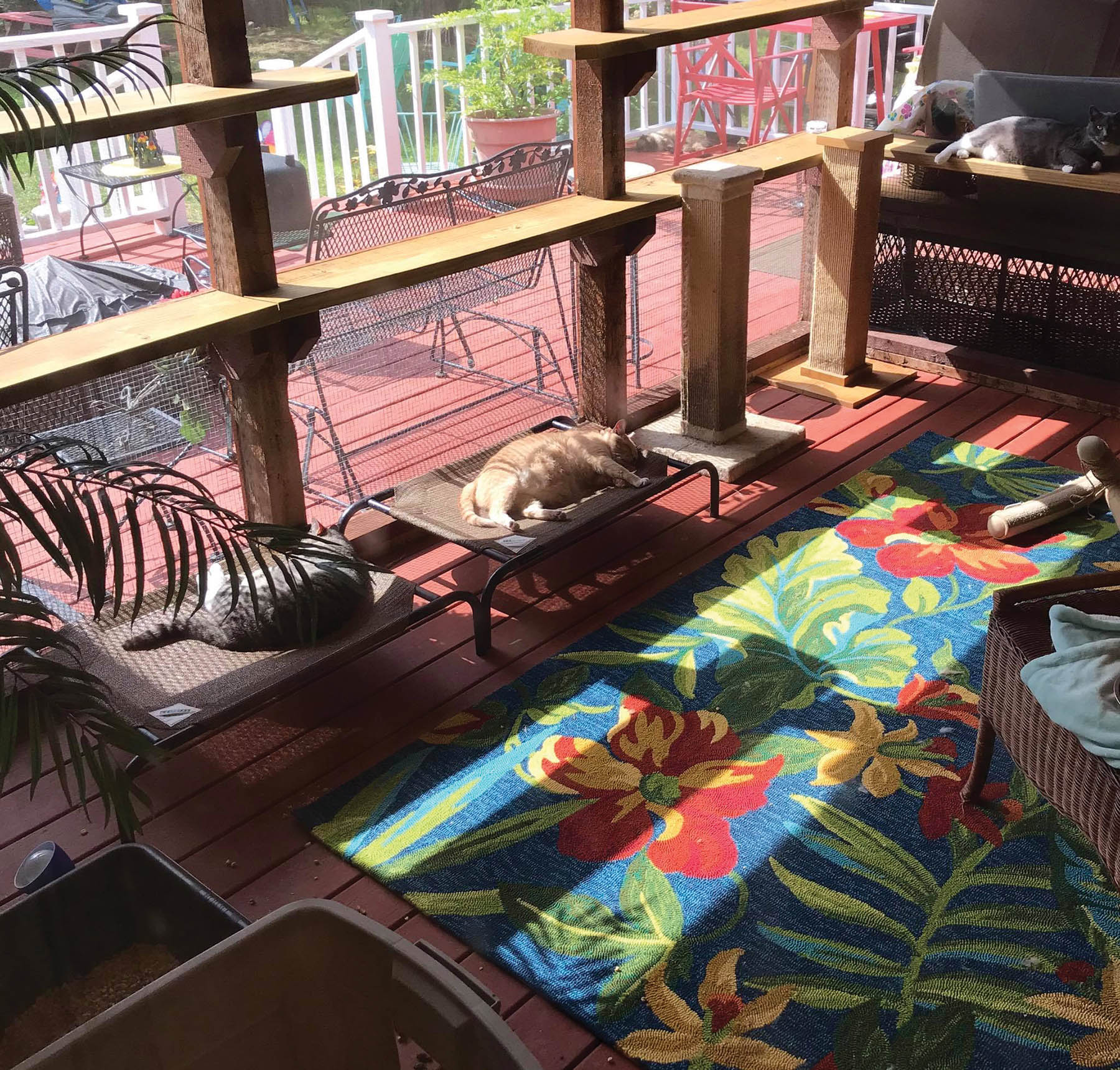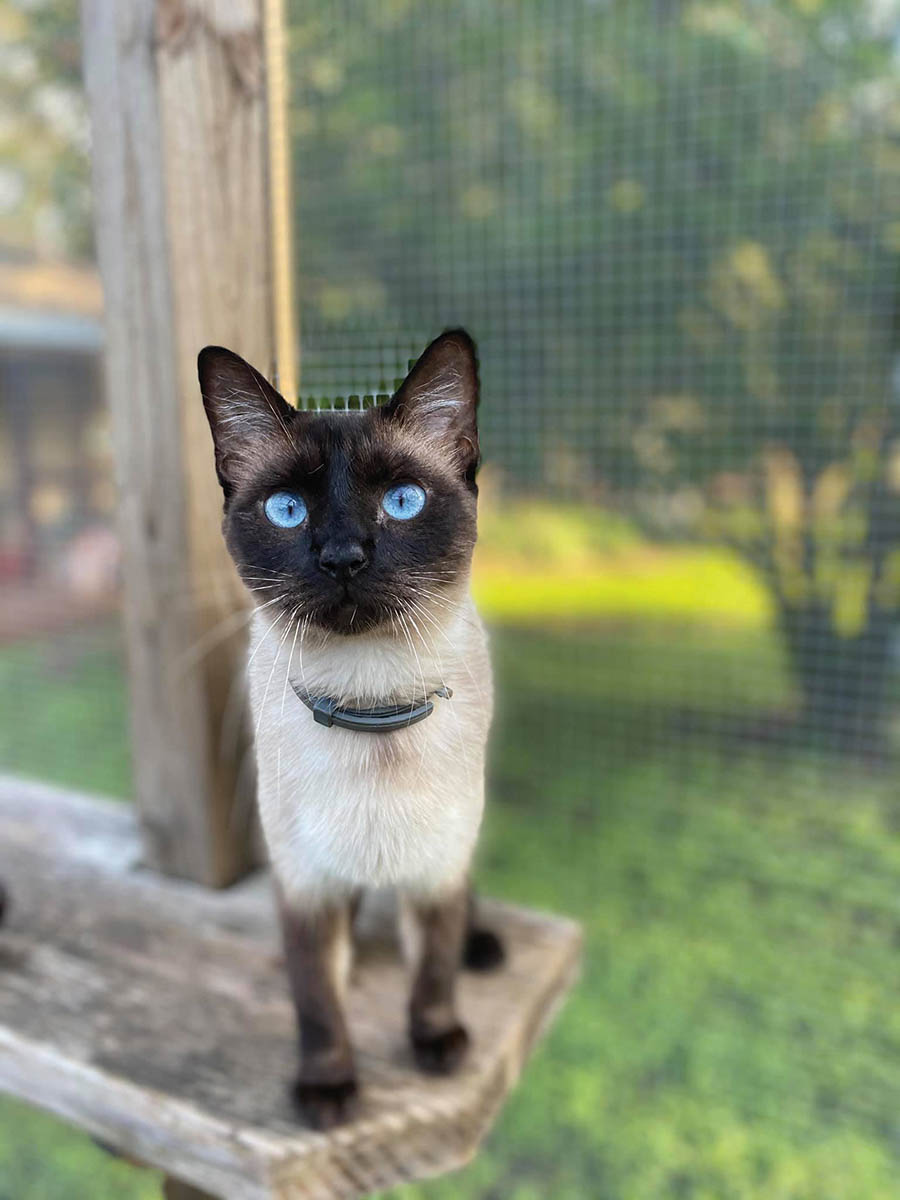Street Cat Rescue Provides Sanctuary for Feral Cats in Austin

Eighteen years ago, Donna Powell decided to help stray cats through a process called trap/neuter/release (TNR). She trapped feral cats, had them spayed or neutered, and returned them to the streets. When she realized she was personally sheltering 16 cats, she decided to do something. Powell created Street Cat Rescue, a nonprofit for stray cats, located on her property near Austin.
The beginning of SCR was Kitty Mama, the first street cat that Powell befriended. Powell, who was originally not a cat person, saw a skinny, black cat running across a lot near her workplace on a cold, rainy day. She put out some food, then decided to get the cat spayed. Powell learned Kitty Mama was nursing newborn kittens at the time, so she took them all home and fell in love.
“I thought, ‘I won’t get attached. I can trap these cats, get them fixed and help the population,’” Powell says.
Her attachment became the catalyst for finding these strays quality homes. She says street cats don’t belong in a shelter because they’re often not adoptable. Austin is a no-kill city, so street cats have a chance to survive, but in some states, cats are euthanized if they aren’t deemed “adoptable.” And temperament is an important factor in discerning which cats are feral and which are tame.
“It’s not a good idea to take a trapped cat to the shelter,” Powell says. “It’s hard to determine (their) temperament in a shelter environment.”
Today, SCR requires a more selective process for bringing in cats, which is why Powell emphasizes the use of TNR. She uses her platform to educate and train the public to properly trap stray cats.

Photo courtesy of Street Cat Rescue
“There’s an art to (trapping), and if it’s done right, you can quickly take care of a colony and get them all fixed,” Powell says. “It becomes a managed colony.”
Powell also says TNR is important because female cats are constantly breeding and can go into heat within two weeks of their kittens being taken away from them.
“There are not enough homes for all the cats in the world(…) There’s not even enough for the ones in the shelter,” Powell says. “If (it) ends up being a nice cat, (you) can try to find a home for it or take it in.”
Meanwhile, Powell and her volunteers, who help at the property, specialize in caring for elderly, special needs or hard-to-adopt cats. They provide shelter and medical care.
“There are some (cats) that become blind (and) some that become old and start having health issues,” Powell says. “We like to give those cats a place to live out the rest of their lives.”
Over the years, Powell has turned her property into a “cat ranch” that includes the main cat area, medical room and “Newman’s Landing,” which houses leukemia-positive cats. There is also the “Enchanted Forest,” a netted-in space for play.
SCR tests each incoming cat for illnesses and offers sanctuary to sick cats. Powell says leukemia- and FIV-positive cats are hard to adopt out, but veterinarians have found that a good environment characterized by low stress and proper nutrition can help these cats live long lives.
As such, SCR prioritizes the health of all their cats. Powell supplies around 65 cats with high-quality, natural food and supplements, such as CBD and essential oils. She says all-natural, grain-free nutrition and low stress lead to healthier cats.
“We spend money on higher quality food, and we know the importance of wet food for cats,” Powell says. “Vets are saying if they can be on it, 80% of their diet should be wet (because) it prevents kidney failure.”

Photo courtesy of Street Cat Rescue
Of course, intentionally caring for 65 cats requires hard labor. For instance, many volunteers often must carry 40-pound bags of pine pellets for cat litter!
For Aurora Zenfell, who began volunteering at SCR during the pandemic, spending time with the cats benefits her mentally and emotionally. As opposed to volunteering at shelters during her college days, Zenfell says she enjoys getting to know the cats’ personalities.
“The best part is interacting with the cats,” Zenfell says. “Breaking that wall (of socializing the less social ones) is satisfying for me.”
Zenfell has witnessed the importance of feral and tame cat interaction and enjoys how they learn from each other, often to receive food and affection. Powell, who incorporates this idea at the cat ranch, says mixing the cats works to their advantage as socializing has helped many of the feral cats become adoptable.
Nancy Brown is a personal trainer who began volunteering at SCR in January 2022 after attending the nonprofit’s annual Christmas fundraiser. She works at the cat ranch by carrying bags of litter, feeding, sweeping, cleaning litter boxes, giving water and washing dishes.
Brown also says Powell cares tremendously for the cats of SCR.
“(It) doesn’t matter if they’re feral or her personal cats; (Donna) pours her heart and soul into (them),” Brown says. “She’ll spend as much money as needed to (…) get this cat better and give it as much of a good life as she can.”
Though there are many cat rescues in the area, Zenfell says SCR is unique in its own way.
“There’s a lot of different cat rescues, but we all do slightly different things,” Zenfell says. “We’re all pieces of a larger puzzle.”






